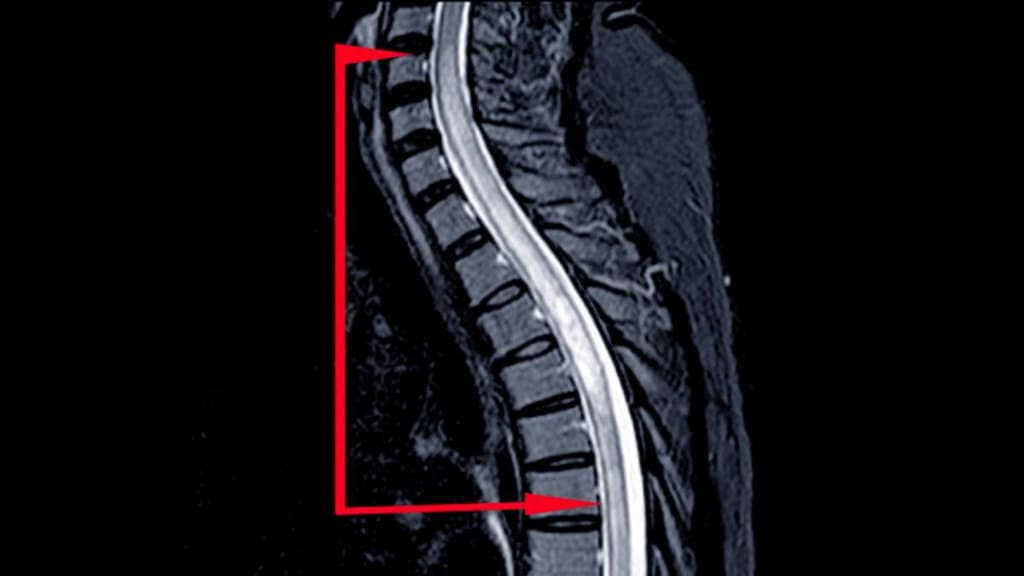
What is transverse myelitis?
Transverse myelitis is a condition where both sides of one section of the spinal cord become inflamed.
This inflammation damages the myelin sheaths in most cases, which is the insulating material that covers the nerve cells. This can interfere with the transfer of nerve impulses and messages from the spinal cord to other parts of the body.
What causes transverse myelitis?
In most cases, no cause for the transverse myelitis can be found. This is called idiopathic transverse myelitis.
Conditions that have been identified as causing or being associated with transverse myelitis include:
- Immune system disorders such as multiple sclerosis, aquaporin-4 autoantibody associated neuromyelitis optica, and other abnormal immune system responses
- Bacterial infections such as Lyme disease, tuberculosis, syphilis, tetanus
- Fungal infections, such as Aspergillus, Blastomyces, or Coccidioides
- Parasites, such as toxoplasmosis or Schistosomiasis
- Viruses, such as varicella-zoster, herpes simplex, influenza, West Nile, Zika and several others
- Other inflammatory conditions that can affect the spinal cord, such as sarcoidosis, systemic lupus erythematosus, Sjogren’s syndrome
- Vascular conditions such as arteriovenous malformation or dural arterial-venous fistula
What are the symptoms of transverse myelitis?
Symptoms of transverse myelitis may happen suddenly (within a few hours or days)or progress gradually over several weeks. They usually affect both sides of the body below the affected area of the spinal cord, but in some cases, only one side of the body is affected.
Symptoms may include:
- Pain, particularly lower back pain
- Paresthesias (a burning, coldness, tickling, numbness or tingling in the legs; shooting neck pains that occur when the neck is bent forward and resolve when the neck is returned to its normal position; abnormal sensations in the genital or abdominal region)
- Shooting pain that radiates down the legs or arms and around the abdomen
- Limb weakness or partial or full paralysis (inability to move one or several parts of the body)
- Muscle spasms
- Urinary frequency or urgency, or incontinence
- Constipation
People with transverse myelitis may also experience a headache, fever, loss of appetite or respiratory problems. Sexual dysfunction, depression, and anxiety are also common.
How is tranverse myelitis diagnosed?
If you are experiencing signs and symptoms of transverse myelitis call your doctor or get emergency medical care if it comes on suddenly.
Your doctor will perform a physical and neurological examination and run some tests to confirm the diagnosis or rule out other conditions. Tests that may be ordered include imaging tests such as an MRI or CT scan of the spine, blood tests, or a lumbar puncture.
How is tranverse myelitis treated?
Treatment depends on the underlying cause (if known) and aims to reduce spinal cord inflammation may include:
- Medications, such as intravenous corticosteroid drugs (eg, dexamethasone, methylprednisolone)
- Plasma exchange therapy
- Intravenous immunoglobulin
- Pain medications
- Antiviral medications
- Other medications as needed for underlying causes or other symptoms
- Physical therapy and other rehabilitative therapy
Most people with tranverse myelitis experience at least a partial recovery, usually within the first 3 months of treatment.




